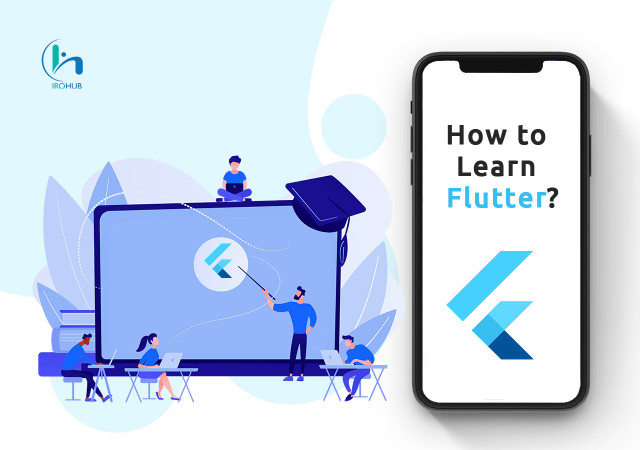The flexibility of creating apps rapidly and the simplicity of the language make Flutter popular. Learning Flutter only requires a few well-informed videos, online and offline learning tools, and a lot of self-learning, regardless of your level of programming experience. Assistance from our Flutter trainers in Kochi will make it better for you. We will walk you through each of them in this article, but first, here are some things you should know before learning about Flutter.
What is Flutter?
Flutter is an open-source framework (more accurately, SDK) created by Google that is mostly employed for creating mobile applications. Using a single codebase, we can create desktop and web versions of the same application. Flutter has a wide variety of exquisitely crafted widgets, a comprehensive collection of motion APIs, and cross-platform scrolling, navigation, typefaces, and iconography. This guarantees fluid performance on both Android and iOS mobile devices. Because Flutter applications are natively compiled, they are very quick and performant.
Why Should You Learn Flutter?
The trend for 2022 is developing mobile applications. Because we can see content and take activities on mobile devices whenever we want, it is most convenient to do so. Flutter is an easy-to-learn and facilitates faster development framework that allows you to design extremely expressive and flexible UI. If those aren't enough justifications, consider these additional arguments for learning Flutter:
- There are no cross-platform problems because Flutter uses a write-once strategy and is pre-compiled to provide native code functionality.
- No reconstruction is necessary. Developers can see code changes as soon as they are saved by using the "hot reload" feature.
- Excellent community and support: The community is very supportive of new learners, and the flutter team is really helpful.
- Can use 2Dimension Flare to make many animations.
- Support for a variety of IDEs, including VS Code, and Android Studio.
- Dart language code is used for both the front end and the back end.
Also Read : Flutter vs React Native! Which one to choose?
How to Learn Flutter?
It's a fantastic idea to start studying Flutter right away. Online resources are plentiful, and information overload may be debilitating. In order to help you learn Flutter effectively, we have developed the greatest resources. The official flutter website has a tonne of documentation, but if you want anything in-depth or unique, look elsewhere.
1. Videos and documentation found online
The main website has a tonne of sample films and documentation. Additionally, you ought to look into the Widget of the Week on YouTube, which features a widget from the SDK. This is the place to go if you need immediate hands-on information on a widget.
2. Online tutorials
The top free and paid courses are available on the net. A decent course to learn both Flutter and Dart simultaneously is a better choice to make. Similar to that, a good free beginner's course for Flutter can also be considered.
3. Books
Books are a fantastic source of reference information and in-depth knowledge about any topic. The finest books for learning Flutter include:
- Learn Google Flutter fast
- Beginning Flutter – A hands-on guide to App Development
You should be able to learn a lot as a novice from only these two books.
Examples from GitHub
Using the samples, demos, and examples posted by the Flutter community on GitHub, you may learn Flutter or improve your existing knowledge of it. To see how an application functions in real-time, try out the UI examples first; you can find some of them in the app store.
Aspects of Flutter
Before we provide you the tools to learn flutter, there is one more thing we want you to understand so you can dive right in and learn by doing instead of having to go through yet another introduction.
- Focus on customisable widgets; instead of using Android XML, all widget sets from the Material Design and Cupertino Pack are available for hassle-free UI creation.
- Developers benefit from instantaneous feedback thanks to hot reload. This cuts down on both the time needed for bug fixing and development.
- Code that can be written once and executed everywhere and on all platforms.
- Flutter combines the just-in-time and ahead-of-time compilation techniques of the Dart programming language, which results in high speed and a quicker startup.
- Both Android and iOS can run native ARM machine code with no issues.
Prerequisites for Learning Flutter
- To begin studying Flutter, you should be quite comfortable with the following. It is best to learn the following ideas first if you are unfamiliar with any of the following before continuing your journey with Flutter:
- If you want to create really intricate and detailed applications, you should have knowledge of native Android development. Our Android training in Kochi can help you with that.
- Concepts for OOPS is critical.o master OOPS concepts because they form the foundation of languages like Java and C++. Here is a great video that explains OOPS well.
- Before learning Flutter, you should be familiar with Dart programming, which is simple to master. Google's general-purpose programming language is what Dart is. You may quickly and easily learn Dart.
- Although not required, having knowledge of C++ or Java is a plus!
Conclusion
For studying Flutter, Udemy and other online resources have created a tonne of excellent courses. A quality training will enable you to pick up new skills rapidly if you are already involved in mobile app development. If your project has more lax deadlines, you should do more tests, try to create your widgets in a local environment, and study a few books to learn about more sophisticated designs. You can bridge the knowledge gap between what you already know and what you need to learn by reading books.
Read More: Best android frameworks for app development in 2020








Post Comments (0)